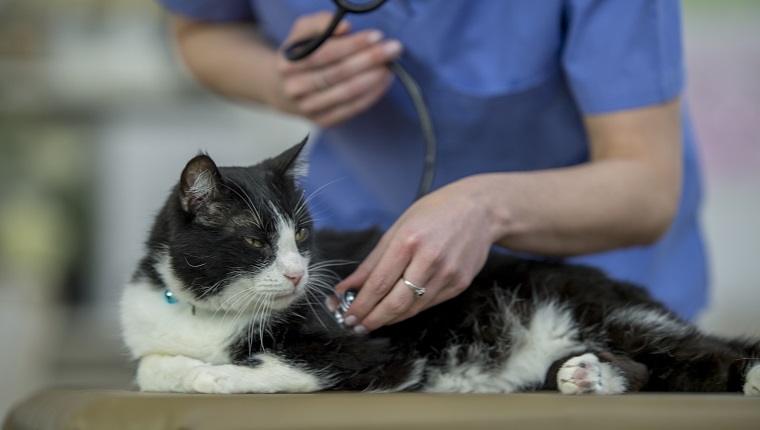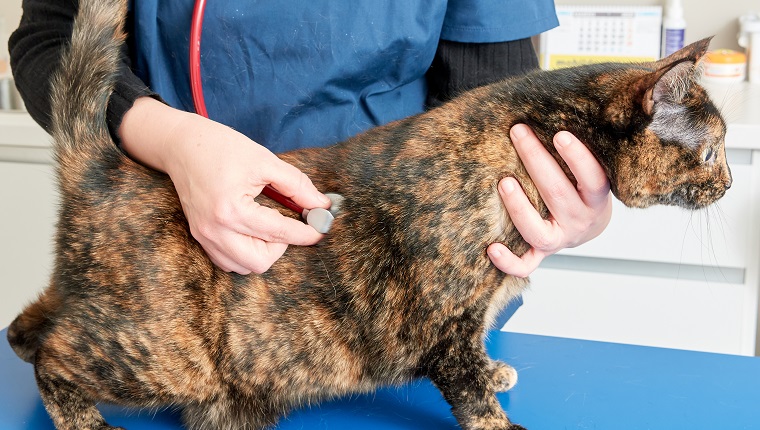Pneumothorax in cats is a condition where air builds up in the space known as the pleural cavity, between the lungs and the chest wall.
Vets categorize the condition in a number of different ways depending on the type that has developed. It can be either traumatic or spontaneous pneumothorax, and either open or closed pneumothorax.
If you see signs that your kitty might be suffering from this condition, then you must consult your veterinarian for a proper diagnosis and course of treatment. Here’s what you should know about the symptoms, causes, and treatments of pneumothorax in cats.
Symptoms Of Pneumothorax In Cats
The symptoms of the condition in cats will vary depending on the type of pneumothorax that has developed. Some of the most common general symptoms include:
- Becoming lethargic
- Shock
- Difficulties breathing (including breathing with an open mouth)
- Increased heart rate
- Seeming restless
- Gums turning blue
Causes Of Pneumothorax In Cats

The cause of pneumothorax in cats will, again, depend on the specific type that the cat has contracted. In cases of traumatic pneumothorax, a physical accident or trauma is often the cause. Surgical procedures may also cause this type.
When it comes to spontaneous pneumothorax, the cause can involve a foreign body that enters the lung, parasites, or pulmonary bullae (which resemble blisters) taking form in the lung area.
Treatments For Pneumothorax In Cats
If you start to think that there is a chance your kitty is suffering from pneumothorax, your veterinarian will order tests to confirm the diagnosis. Vets can use a procedure known as a bronchoscopy that involves a very small camera attached to a tube to view the cat’s airways.
Another procedure known as thoracocentesis can allow a vet to take a look at a cat’s pleural cavity area by use of a catheter. In some cases, vets may also use X-rays of the chest area to confirm the diagnosis.
For treatment, many cats will require surgery to remove the accumulated air from the pleural cavity. When recovering, cats may also need oxygen therapy.
In all cases, cats should keep a limit on the amount of physical activity they do and aim to recover in a calm and relaxed environment.
Has your cat ever developed pneumothorax? How did your vet help your pet recover? Tell us all about it in the comments below.




